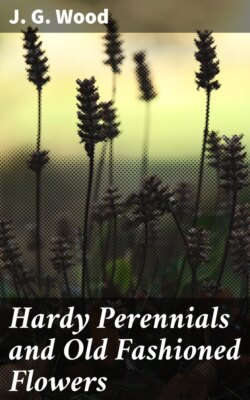Читать книгу Hardy Perennials and Old Fashioned Flowers - J. G. Wood - Страница 45
На сайте Литреса книга снята с продажи.
Bulbocodium Vernum.
ОглавлениеTable of Contents
Spring Bulbocodium, or Spring Saffron; Nat. Ord. Melanthaceæ.
In mild winters, sheltered positions, and light vegetable soil, this bulbous plant may be seen in blossom from January to March. The flowers appear before the leaves, and may, at the first glance, be taken for lilac-coloured croci. Up to a certain stage, however, the colour gradually improves in the direction of purple, and where there are established patches it is no inconsiderable part of the effect caused by this desirable winter flower to see it a mass of bloom in many shades, ranging from white (as in the bud state) to a lively purple. It is an old plant in English gardens, and is largely found wild in mid-Europe. It came from Spain as early as 1629. Still, it is not generally known or grown; but within the last few years it has come to the fore, with a host of other hardy and early-flowering subjects. The natural order in which it is classed includes many beautiful genera, both as regards their floral effect and anatomical structures. Veratrum, Uvularia, and Colchicum are, perhaps, the more familiar, and the last-mentioned genus is a very nearly allied one. A feature of the genus Bulbocodium is implied by the name itself, which means "a wool-covered bulb." This quality, however, will be more observable when the bulb is in a dormant state; it exists under the envelope. The crocus or saffron-like flowers are aptly named "Spring Saffron," though there is a great botanical difference to be seen between this genus and that of Colchicum when the flower is dissected. The bloom is produced from the midst of an ample sheath, and overlapping leaves, which are only just visible in the early season of this year; the corolla of six petal-like divisions is 2in. to 3in. across when expanded, and of various shades and colours, as already stated; the segments are completely divided, being continued from the throat of the corolla to the ovary by long tapering bases, called nails, claws, or ungues. The leaves are stout, broadly strap-shaped, channelled, and of a deep green colour. The bulb is rather small; its form resembles that of the autumn crocus, as also does its mode of growth and reproduction.
The early blossoms of this bulb soon disappear, and though the roots are all the better for being well ripened, a thin patch of some of the finer annuals sown in spring amongst their withering leaves will not do much harm, and will prove useful as gap-stoppers. Another good way is to grow these dwarf bulbous flowers with a carpet of creepers, of which there are scores in every way suitable; and where nothing else is available or to be grown with success, the small-leaved ivy will answer well. The dwarf phloxes, however, are more useful; their browned spreading branches form a neutral but warm-looking ground to the purple blossoms; besides, by the time all trace of the Bulbocodium has shrivelled up, they begin to produce their sheets of bloom. All such prostrate forms not only preserve dwarf winter flowers from the mud, but otherwise give effect to the borders. This bulb thrives best in light soil, well drained; in sheltered nooks it may be had in flower a month earlier than in exposed parts. Under such conditions it increases very fast, and the bulbs may be transplanted with advantage every other year after the tops have died off. In stiff or clay-like soil it dwindles and dies.
Flowering period, January to March.
